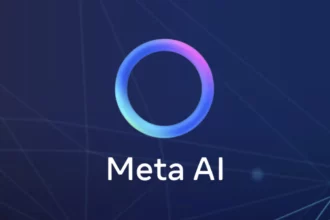What if the future of technology could be shaped by a single piece of legislation? California’s Senate Bill 1047, also known as the Safe and Secure Innovation for Frontier Artificial Intelligence Models Act, aims to construct a framework for the responsible development of advanced artificial intelligence systems.
Authored by State Senator Scott Wiener, this bill seeks to navigate the tumultuous waters of AI regulation, striking a balance between innovation and safety in an era where algorithms are becoming as intricate as the minds that create them. As the tech world holds its breath, the implications of this bill could reverberate far beyond the Golden State.
Table of Contents
ToggleWhat is Senate Bill 1047 and what does it aim to achieve?
Senate Bill 1047, authored by State Senator Scott Wiener, is a pivotal piece of legislation in California known as the Safe and Secure Innovation for Frontier Artificial Intelligence Models Act. This comprehensive bill was crafted with the purpose of regulating the development and deployment of large-scale artificial intelligence systems, especially those that require substantial computational resources, defined by utilizing at least 1026 FLOPS during training. The primary aim is to ensure that companies engaged in developing these advanced AI models are mandated to establish robust safety protocols that effectively mitigate the associated risks and prevent potential “critical harms” resulting from their deployment.
The bill endeavors to create a structured framework for accountability among AI developers, emphasizing the ethical implications and the impact of their technologies on public safety. By doing so, it seeks to address concerns regarding the misuses of AI, which could range from creating disinformation through deepfakes to enabling technologies that could endanger public security. For instance, companies are required to retain unredacted safety protocols and undergo annual independent audits to assess compliance with the bill’s mandates, ensuring a continuous evaluation and enhancement of safety measures.
Moreover, SB 1047 draws attention to the potential consequences of unregulated AI advancements. In light of California’s leadership in AI innovation, the bill aims to strike a balance between fostering innovation and protecting citizens from the negative implications of emerging technologies. It reflects a growing recognition among lawmakers of the necessity for clear rules governing powerful AI systems that can fundamentally alter not just industries but societal functions at large. The legislative process behind this bill has been shaped by diverse opinions, with proponents arguing for the need for stringent oversight, while critics contend that overly rigid regulations might stifle innovation. Ultimately, the passage of Senate Bill 1047 represents a significant step towards ensuring that the future of AI development aligns with public safety and ethical standards.
What are the main provisions of SB 1047?
Senate Bill 1047 introduced several significant requirements aimed at developers of large artificial intelligence (AI) models. Central to the bill are the following key provisions:
- Implementation of Safety Protocols: Developers are mandated to establish comprehensive safety and security protocols prior to the initial training of any covered AI systems. This requirement aims to ensure that adequate measures are in place to mitigate risks associated with advanced AI technologies.
- Documentation Retention: The bill stipulates that developers must retain extensive documentation regarding these safety measures for a designated period. This includes not only the original protocols but also any revisions or updates made over the years, ensuring transparency and accountability.
- Independent Audits: SB 1047 establishes a framework for mandatory independent audits conducted by third-party organizations. These audits aim to verify compliance with safety and security regulations, helping to bolster the integrity of AI development practices.
- Incident Reporting: Developers are required to report any AI-related incidents to the Attorney General. This provision seeks to create a systematic approach for tracking and addressing potential risks linked to AI systems.
- Whistleblower Protections: The bill enhances protections for whistleblowers, preventing developers or their contractors from retaliating against employees who report non-compliance or potential hazards related to AI systems. This is crucial for fostering an environment where ethical concerns can be voiced without fear of retribution.
Furthermore, SB 1047 proposes the establishment of the Board of Frontier Models within the Government Operations Agency. This board is tasked with overseeing the ever-evolving landscape of AI and continually updating regulations related to the definitions and requirements applicable to “covered models.” This provision is aimed at ensuring that the oversight of AI development remains adaptive to the rapid advancements in technology, addressing emerging risks while promoting innovation.
More – California AI Bill Explained: Understanding Its Impact on Rights, Technology, and Society
Why was SB 1047 vetoed by Governor Gavins Newsom?
Governor Gavin Newsom vetoed SB 1047 due to concerns about the bill’s potential to impose overly stringent regulations on all artificial intelligence (AI) models, without distinction between different risk levels associated with their applications. He noted that the legislation did not adequately differentiate between low-risk and high-risk AI environments, which could lead to unnecessary barriers for innovation in less critical areas.
Newsom acknowledged the commendable intentions behind the bill but argued that the oversight framework proposed could inadvertently stifle creativity and development in the rapidly evolving tech sector. He highlighted the need for a more nuanced approach that effectively safeguards public welfare while encouraging advancements in AI technologies. In essence, the governor’s decision reflects a balancing act between enforcing necessary regulations to address the potential dangers of AI and maintaining California’s status as a leader in technological innovation. This represents a call for lawmakers to refine their strategies to ensure that they are effectively targeting genuine risks without imposing broad restrictions that could hinder progress.
What reactions did the veto trigger in the tech community?
The veto of SB 1047 sparked a wide range of reactions within the tech community, underscoring a notable divide in perspectives. On one hand, prominent figures, including industry leaders from Silicon Valley and renowned experts like Meta’s chief AI scientist, expressed concern that the bill’s stringent regulations could stifle innovation and hinder the development of artificial intelligence technologies. They argued that imposing rigid rules risks creating barriers for creativity and progress in a rapidly evolving sector.
Conversely, many stakeholders emphasized the necessity of robust regulations, advocating for safeguards to protect public welfare and mitigate the potential dangers associated with advanced AI systems. Long-time House Speaker Nancy Pelosi notably commended Governor Newsom for making a calculated decision that prioritizes the interests of small entrepreneurs and academic institutions over those of larger tech corporations, suggesting a focus on equitable opportunities across the industry.
In the wake of the veto, there is a growing recognition among experts that the discussions surrounding the bill have significantly elevated the conversation regarding AI safety and necessary regulations. This ongoing dialogue highlights the complexities of balancing innovation with ethical considerations, and it calls for continued exploration of effective oversight mechanisms that accommodate diverse applications of AI while simultaneously supporting advancements in technology.
What was the context in which SB 1047 was introduced?
Senate Bill 1047 was introduced on February 7, 2024, in response to the escalating concerns surrounding the rapid development and deployment of artificial intelligence technologies, particularly generative AI. California, recognized as a leader in AI innovation, has become a focal point for discussions about the need for a regulatory framework that balances the promotion of technological advancements with the imperative for public safety. This legislation represents a significant effort to proactively establish guidelines and protocols aimed at addressing the complex landscape of AI, which is increasingly influencing diverse sectors, including healthcare, security, and finance.
The introduction of SB 1047 was driven by a collective acknowledgment among lawmakers, industry leaders, and the public about the potential ethical, societal, and security implications of unregulated AI systems. As the capabilities of AI continue to expand, so do the risks associated with their misuse, raising essential questions around accountability and oversight. This bill seeks to provide a structured and comprehensive approach to regulating AI, ensuring that innovation proceeds alongside the implementation of necessary safety measures. By doing so, SB 1047 aims to foster an environment where technological growth can coexist with the ethical considerations that must accompany advancements in such a powerful domain.
What impact could the discussions surrounding SB 1047 have on future AI legislation?
The discussions surrounding SB 1047 could profoundly shape future AI legislation by fostering a more nuanced understanding of the regulatory landscape. As stakeholders—including technology companies, academia, and lawmakers—engage in ongoing dialogues, there emerges a significant opportunity to craft regulations that balance the promotion of innovation with the imperative of public safety.
Governor Newsom’s office has emphasized the importance of collaborating with experts to develop a structured regulatory framework that addresses the core safety concerns associated with advanced AI technologies. This collaborative approach could pave the way for alternative proposals that prioritize protective measures while also encouraging California’s dynamic AI sector to thrive. Moreover, the lessons learned from the SB 1047 discussions could inspire lawmakers to consider varying degrees of risk in different AI applications, ensuring that regulations are appropriately scaled to foster growth while safeguarding against potential misuse. As a result, these conversations not only enhance awareness of ethical and societal implications but also catalyze a more informed approach to AI governance that aligns technological advancement with user safety and public trust.





